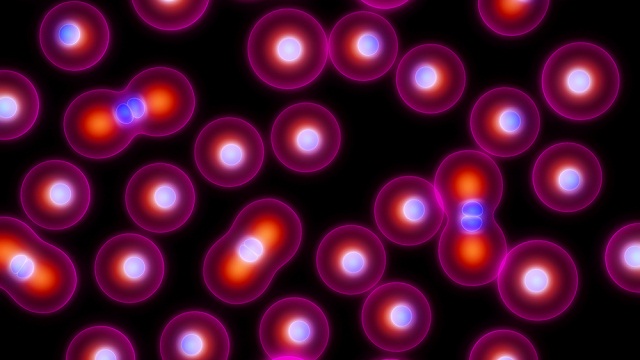How to Read Your Own Body With Data

How effective are fitness-tracking devices and apps? The first time I used one I felt transformed into a machine. Not only was I tracking my own bike ride but I had synced up the app to all the social media platforms I use. There would be absolutely no letting up. I pushed myself to not only maintain a faster pace but also ride 24 miles instead of the usual 20.
The whole world could be tracking my ride, and conscience, after all, is the knwoledge that someone is watching. It is therefore hard to convey the sense of disappointment I felt at the end of the ride when I realized the app had crashed.
What’s the Big Idea?
Your body is a data-dispensing machine, constantly giving off signals about your health. A baby’s digital presence often begins before birth, starting with a sonogram. Parents may also choose to learn what genes they will be passing on to the child. Then very shortly after birth, the baby’s presence is all over Facebook. Man, are we good at generating data — 1.8 zettabytes of it, in fact, was produced in 2011, according to the firm IDC.
We are just learning how to utilize all of this data.
The quantified self-movement aims to change this, and not only transform the way we use data to monitor ourselves but also to have some fun in the process. The photographer Rick Smolan chronicles the data revolution in his book, The Human Face of Big Data, and Smolan points to the mobile health revolution as one of the most promising applications we have seen in this field.
Smolan shared two examples of this in a recent interview with Big Think. We see on the one hand how technology can leverage data to provide the kind of “motivational hacks” that I experienced on my bike ride. On the other hand, “surreptitious technologies” can also be utilized to monitor aging patients, enabling them to live at home longer and more safely.
The “Magic Carpet”
Smolan told us his mother is ninety years old and his father died five years ago. “My mother wanted to stay in the house where she and my farther lived together all these years,” Smolan told us, “and then she started falling about three years ago.”
Smolan and his siblings had a number of options. One option was to have his mother move in with him, or his brother and sister. His mother declined. So they tried live-in help. “She had complete strangers sleeping on her couch,” Smolan says, “which she hated.”
Then Smolan learned about a joint venture between General Electric and Intel that is aimed at helping people remain at home longer as they get older. One “aging in place” device developed by the Intel-GE Car Innovations Lab is a prototype for the so-called Magic Carpet, a carpet with sensors that you install in the home of a loved one. Smolan tells us how it works:
It looks at my mom for the first week, for example, and it would say this is how Rick’s mom walks and moves in her normal life. So this is how fast Rick’s mom walks, this is her balance, this is the time of day she touches the carpet. On a day where all of a sudden my mom’s balance is off, or she’s moving more slowly or it’s eleven o’clock in the morning and she hasn’t touched the carpet, which means she’s still in her bedroom, which is not normal for her, the system notifies me.
The Magic Carpet has not been released and will probably be quite expensive. To learn more about this and other “surreptitious technologies” that measure movement and behavior to help care for aging patients, we recommend Eric Dishman’s TEDMED talk, here.
Jawbone Up Band
As mentioned previously, fitness-tracking devices can serve as “motivational hacks” to push yourself harder to literally go the extra mile.
Smolan shared his experience with using the Jawbone Up device that is similar to Magic Carpet in that it measures a radius of travel. “Rick normally walks ten thousand steps in the coarse of the day,” it tells Smolan. “It actually shows me in my sleep when I wear this little band,” he adds. “And it actually shows you when you go to bed, enter your deep sleep, your light sleep, how many times you wake up, and it turns it into sort of the gamification of health.”
Since it’s a game, Smolan says, it’s not surprising that “my ten year-old and twelve year-old fight over who gets to wear this band at night.”
What does this data tell us?
Smolan can see whether his children got a good night’s sleep or not. “Or my ten-year-old, Jessie says, ‘Dad, did you walk your ten thousand steps today?'” Smolan says. “So instead of it being something for older or infirm people, it actually makes sort of monitoring your own health something you would do with a sense of fun to it.”
What’s the Significance?
These are just a few examples of how data and technology can help us monitor our own health. This is significant because “Americans are spending 18 percent of our GDP on health care,” Smolan says. “And as we all know, every month we get a bill that shows our cost going up and our coverage going down.”
The quantified self movement is a way of taking control of our own health. This is accomplished through self-monitoring, but not in “an obsessive navel-gazing way,” Smolan says. The quantified self movement is really the recognition that we need to start paying attention “to what our body is telling us, giving us signs and information way before we’ve come down with some of these serious illnesses.”
Image courtesy of Shutterstock
Follow Daniel Honan on Twitter @Daniel Honan





